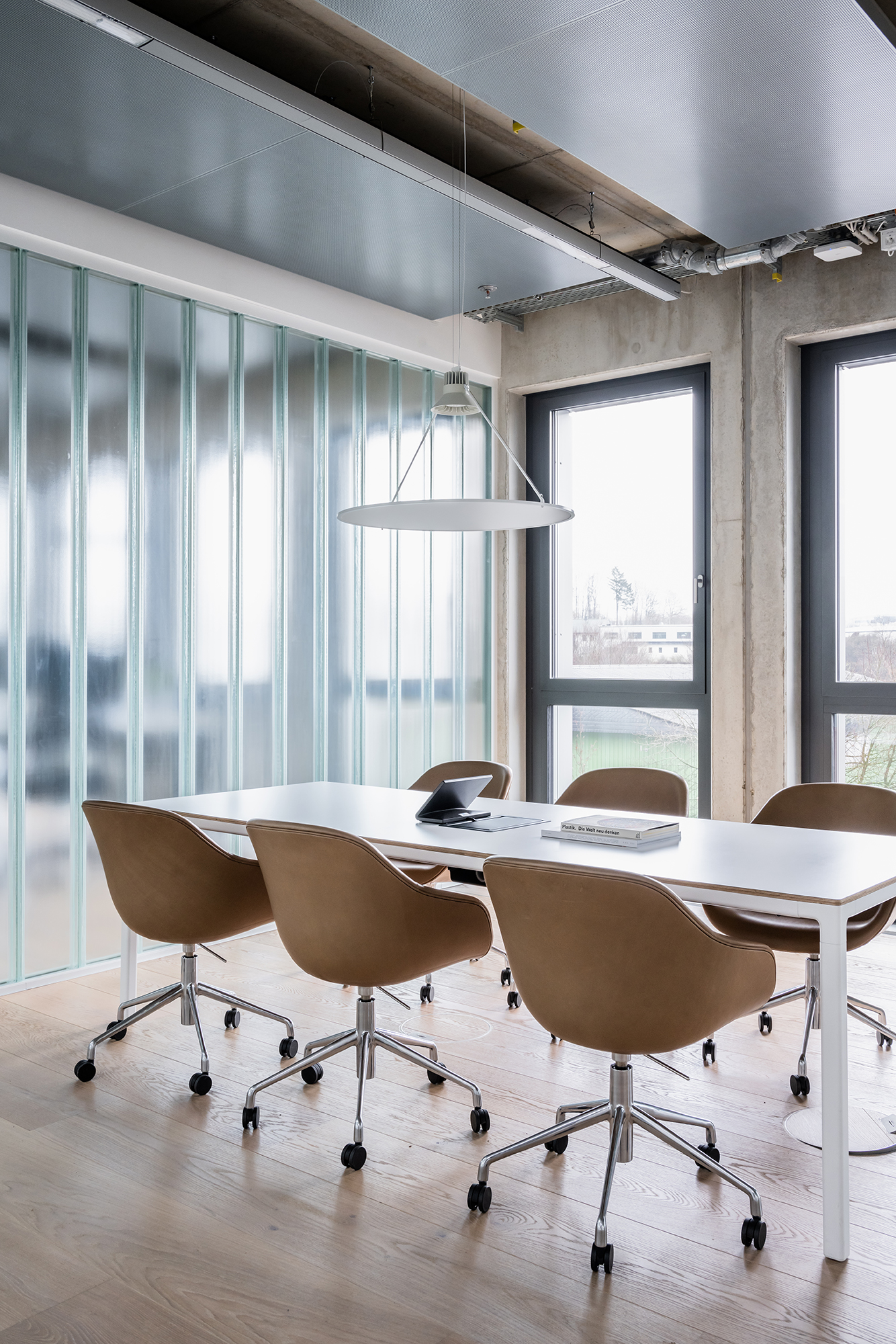Schwalbe Hybrid Building
2023, OFFICE, Total area: 2.200 sq.m

Architects in Charge: Tamara Muradova (Lead), Marinika Sadgyan, Ralf Janz / Photographs: Ilya Ivanov. Stages: Schematic Design, Design Development, Construction Documents, Construction Administration.
The construction was being realised during the pandemic and took three years from concept to completion.
Schwalbe Hybrid Building is located in Reichshof, Germany. The interior architectural project for Schwalbe HQ covers around 2,200 square meters.

Schwalbe - leading bicycle tire manufacturer owes its success to the uncompromising quality, continuous innovation and new technologies and pushing for more environmentally aware production. The project was born in parallel with the revision of the company’s approach to the working environment and an ambitious goal to create a responsible building for the future. Schwalbe Hybrid building is one of the few examples of cradle-to-cradle design principles used in industrial architecture now.
98% of project materials are recyclable and 100% of concrete and steel can also be recycled.
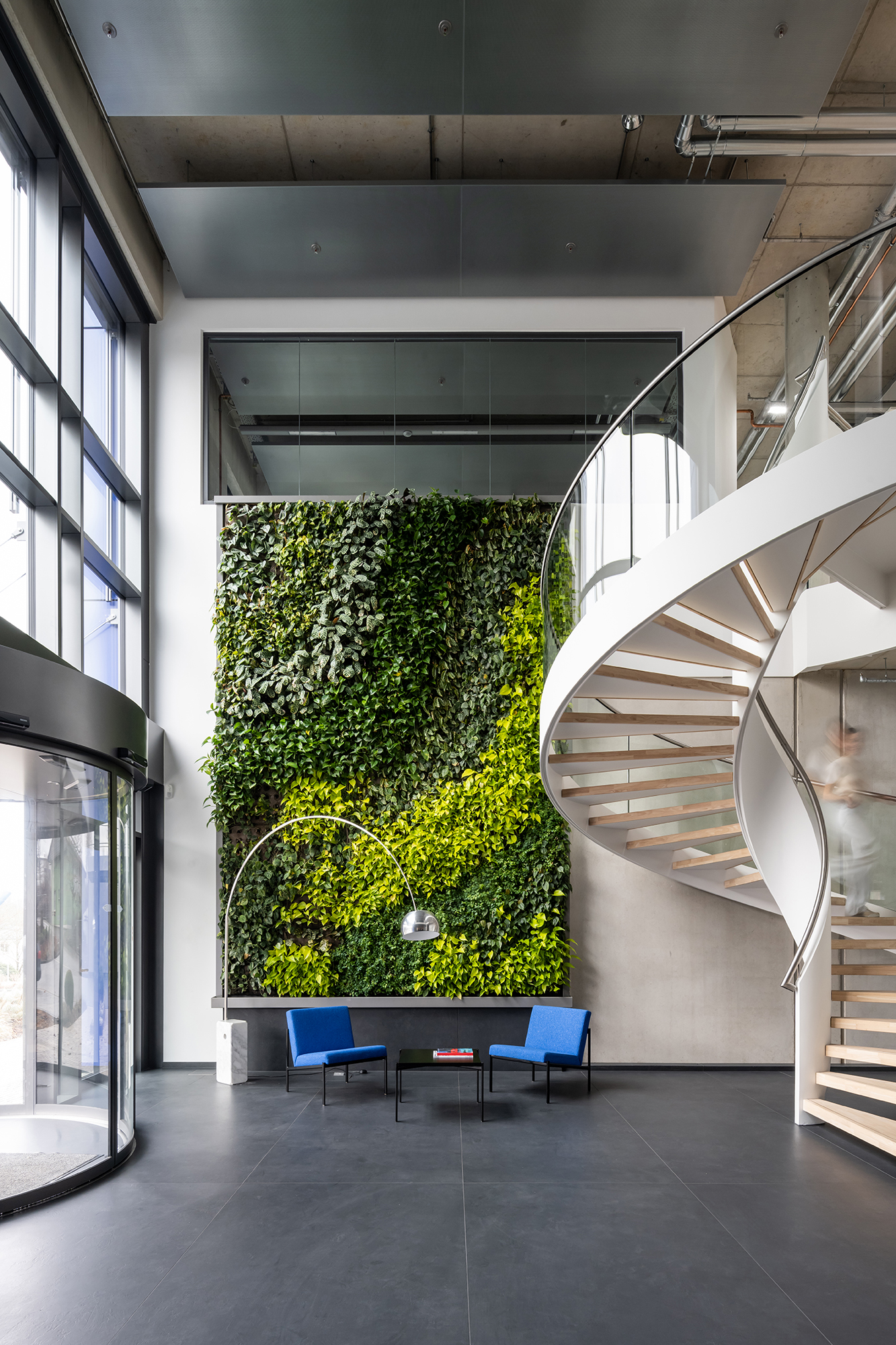
Annually, the building generates over 60.000 kWh electricity, a very energy-efficient air heat pump temperates the entire building via ceiling sails so it heats and cools autonomously. Considering the location in the region with regular heavy rainfalls, the rain water is collected to irrigate the roof gardens, green walls and to service the restrooms throughout the building to reduce water consumption.
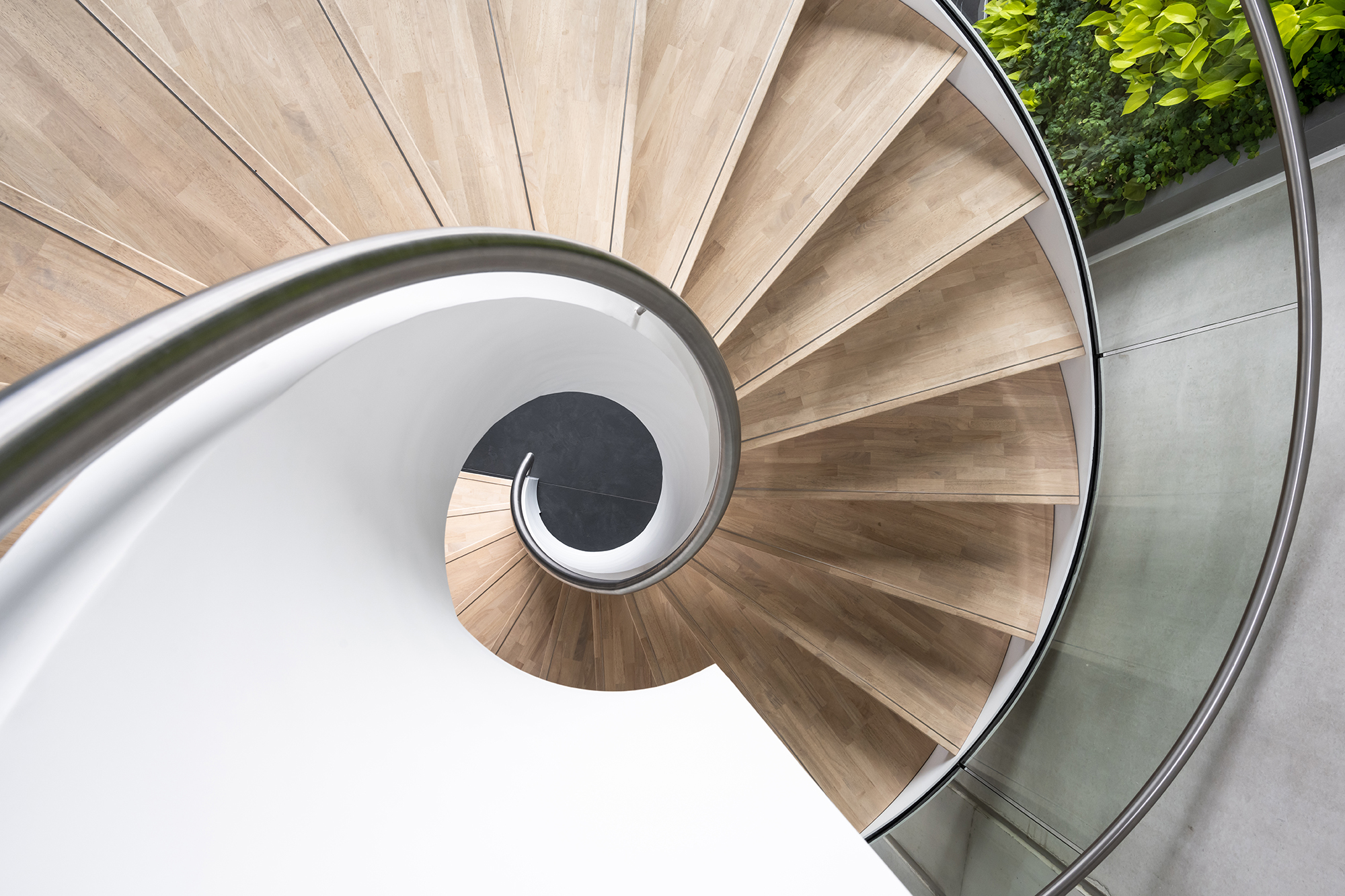
The architectural brief was to follow the company’s corporate philosophy which puts environmental and social responsibility at the centre and to provide inspiring and innovative spaces for work and recreation. The architects’ goal was to translate into space the values that the company carries and the passion for bicycles of all people behind Schwalbe. The key method in their approach was to use mostly natural, recycled and recyclable materials found in the DNA of Schwalbe.

Archiproba believes in flexible and timeless design, where the only trends respected are quality and sustainability.
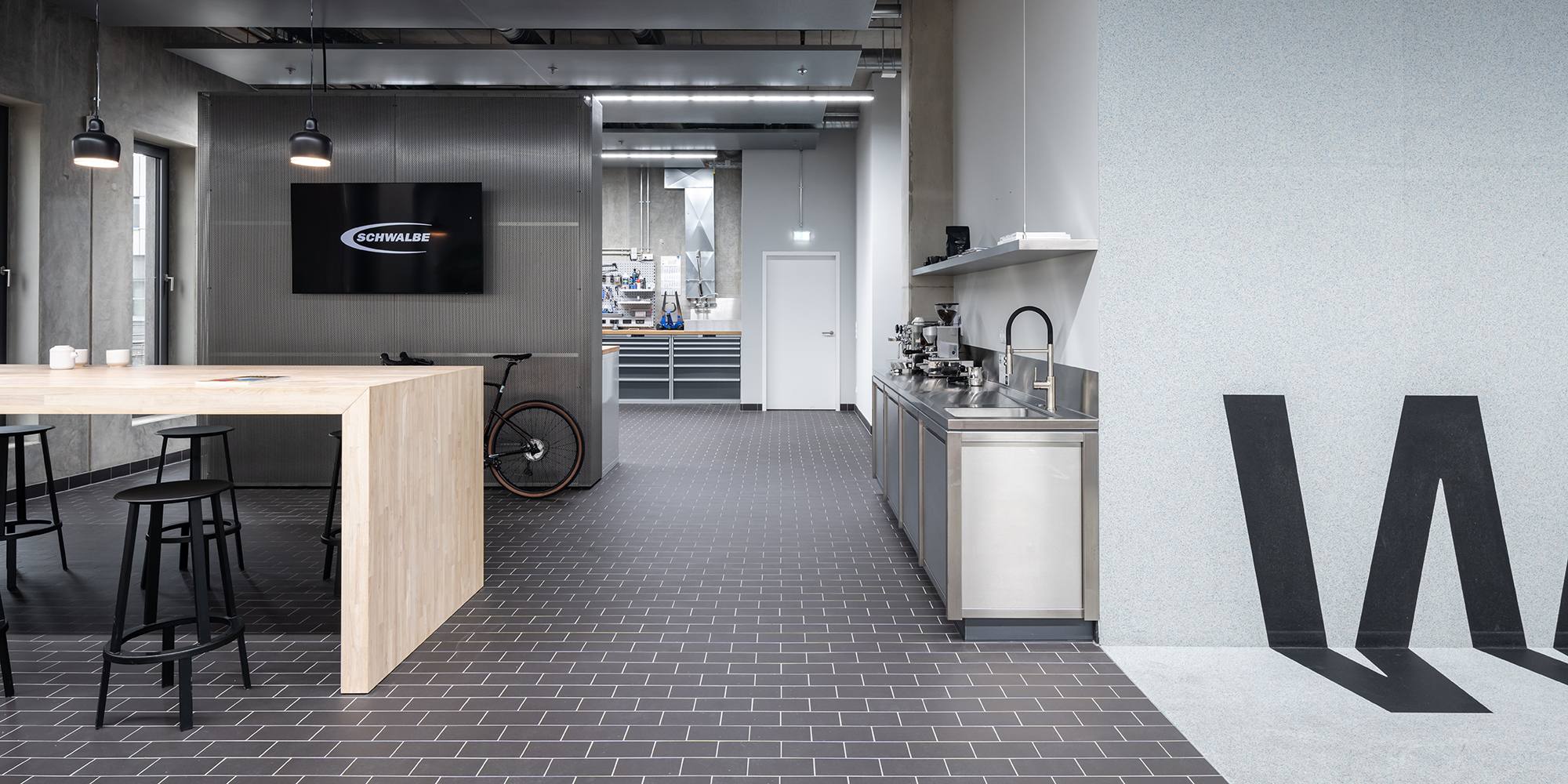
The new building occupies three floors and accommodates reception area, bicycle workshop, Brand World, marketing and technical departments, lecture and workshop halls, connecting bridge and a rooftop garden with fresh fruits and vegetables used in the canteen. Extra working areas are provided for key sectors, such as testing laboratory and customer service. In response to request for open-plan solutions, the architects tried to expand the notion of “hybrid” into spatial design and working environments. Every area of the building has multiply functions and may be used for individual or collaborative working, meetings and events.

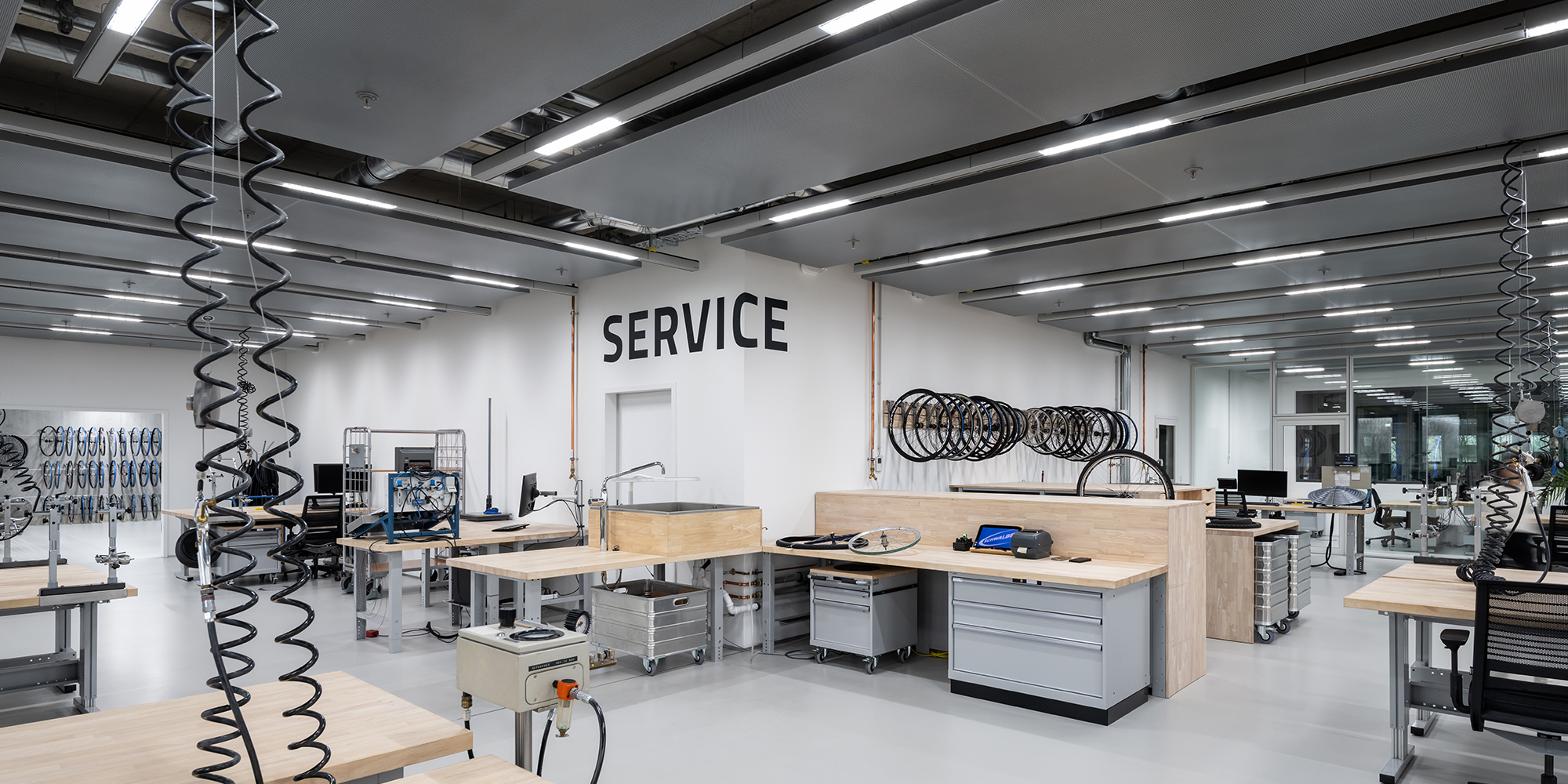
Rubber wood on the table tops and rubber C2C certified flooring, both able to withstand any work tasks.
Customer Service located on the first level is a clear and minimal environment where function prevails. The architects deliberately revealed industrial elements and tools to exhibit the beauty of work-in-progress and a valuable role of this department in the chain of company’s daily operations.
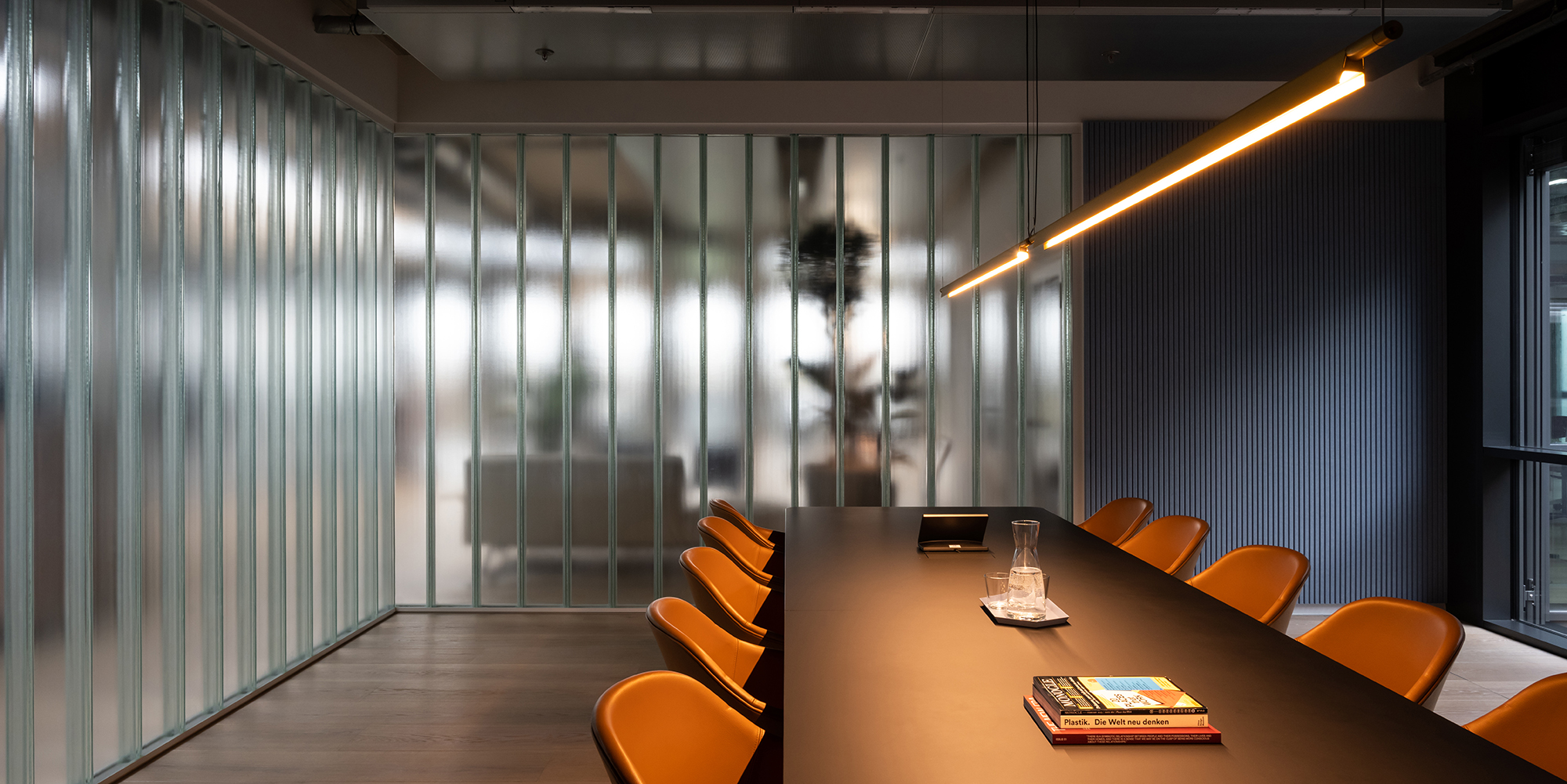
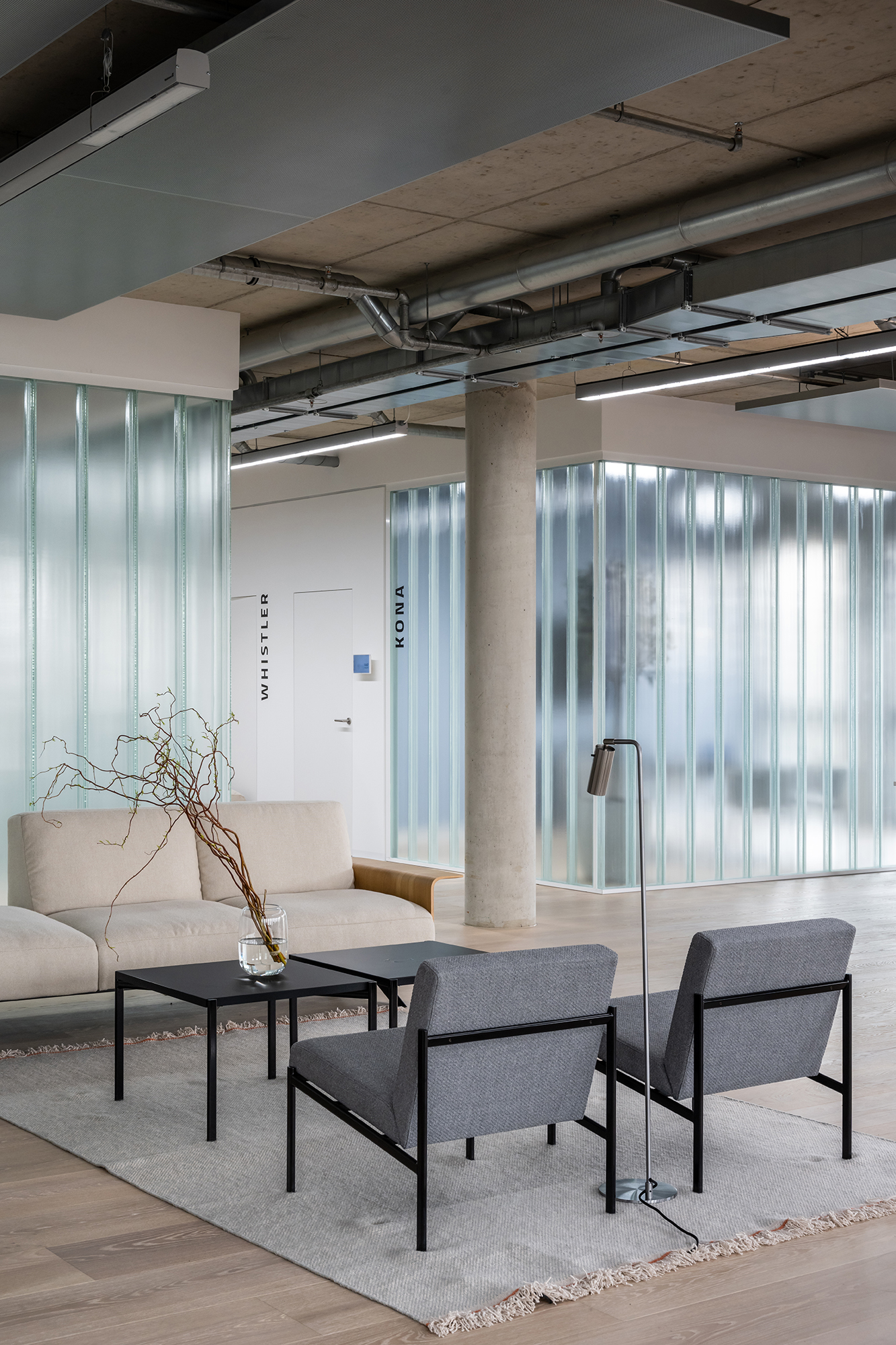
Translucent U-glass was chosen to zone the office areas and to create meeting rooms. This eco-glass caters for smart constructions and is one of the most sustainable building products available today. The furniture selected for the office is mostly cradle-to-cradle certified products or iconic design with long afterlife. Light wooden floor and various green lounges form a friendly and comfortable environment for both working and relaxation.

Every area of the building has multiply functions and may be used for individual or collaborative working, meetings and events. In order to capture the light and air in the space, dry walls were swapped with glass, where possible. Thus the users of this vast building are feeling more united and the visitors are given a glimpse behind the scenes of Schwalbe’s different departments.

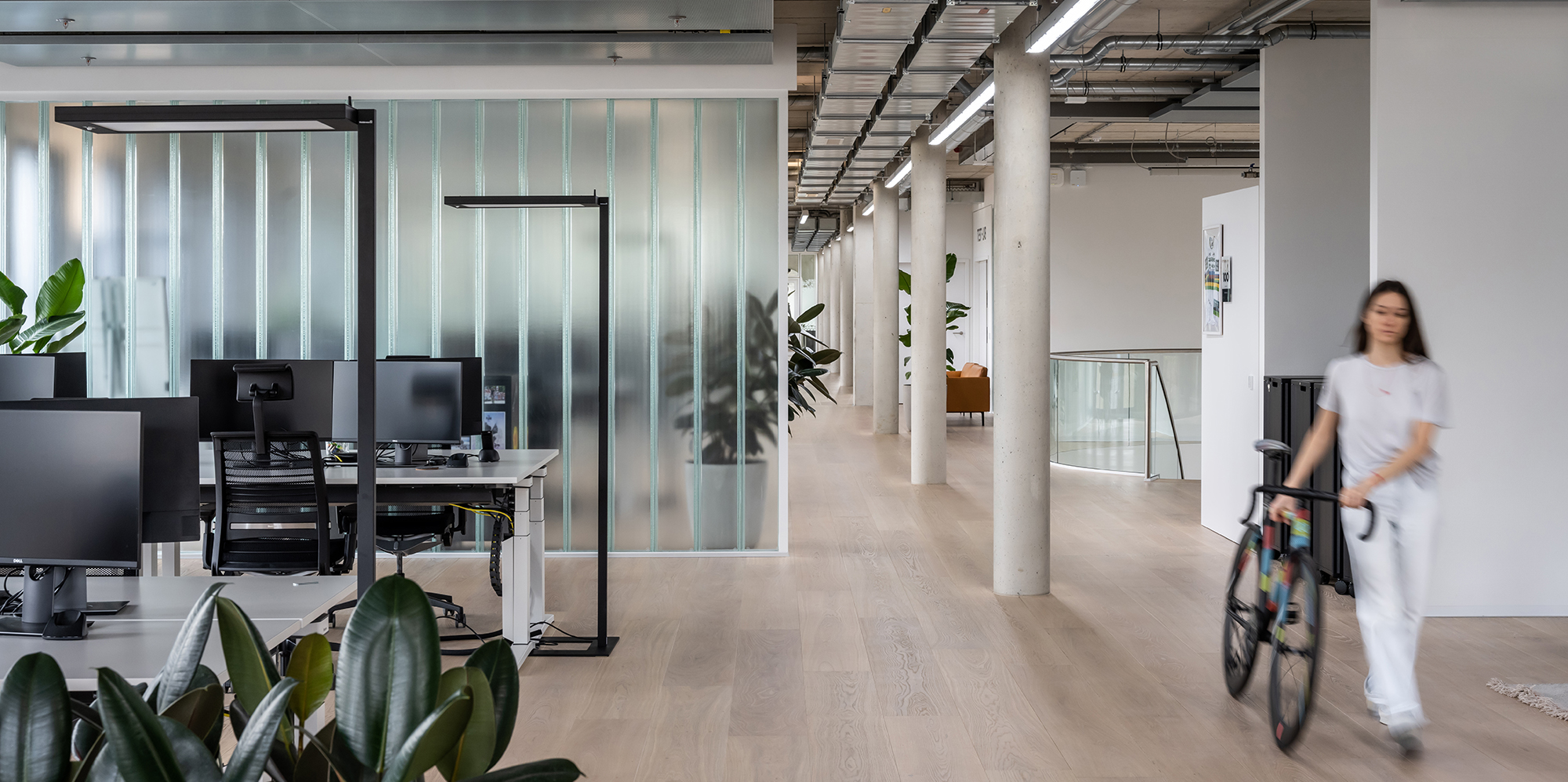
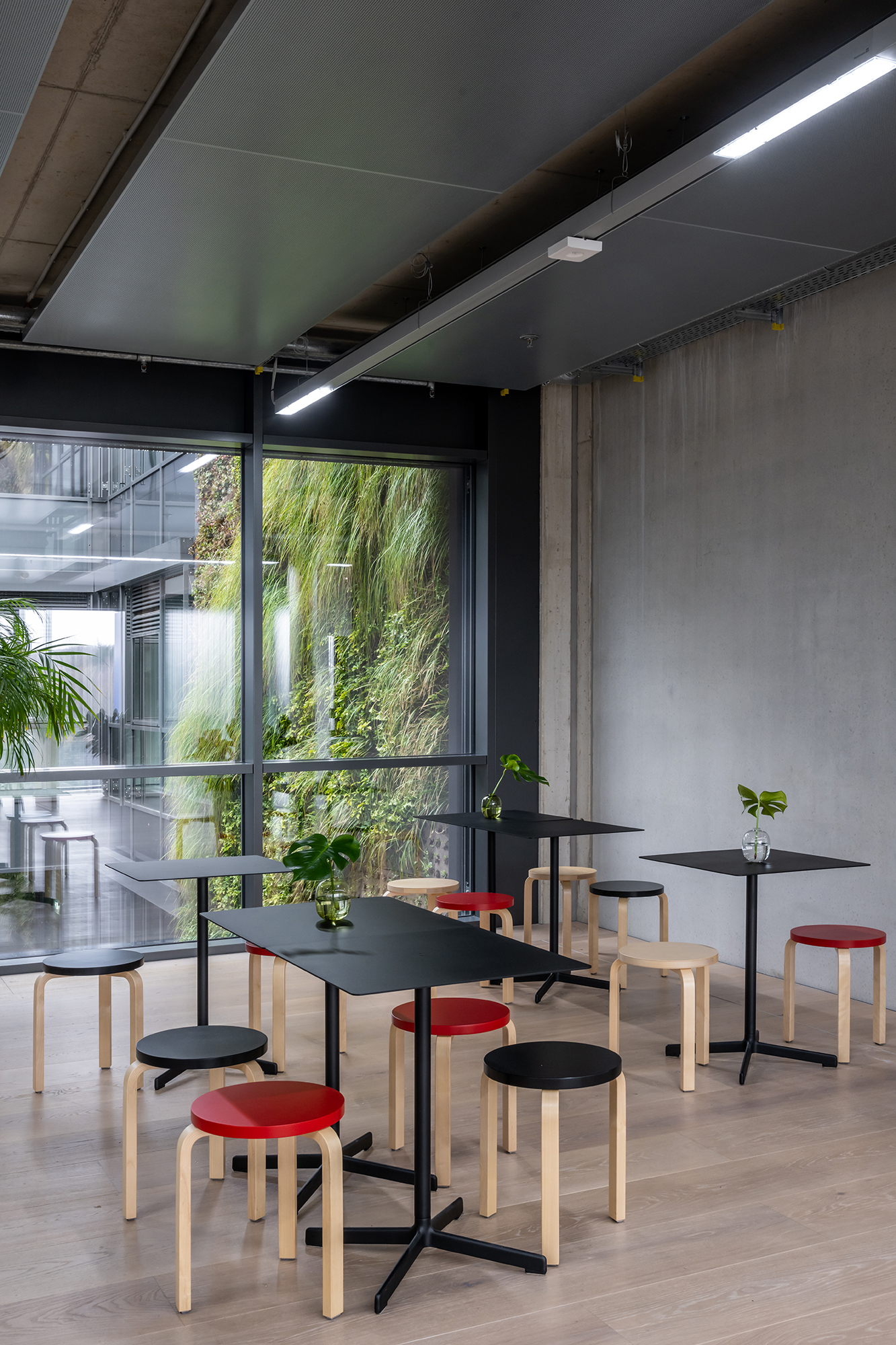
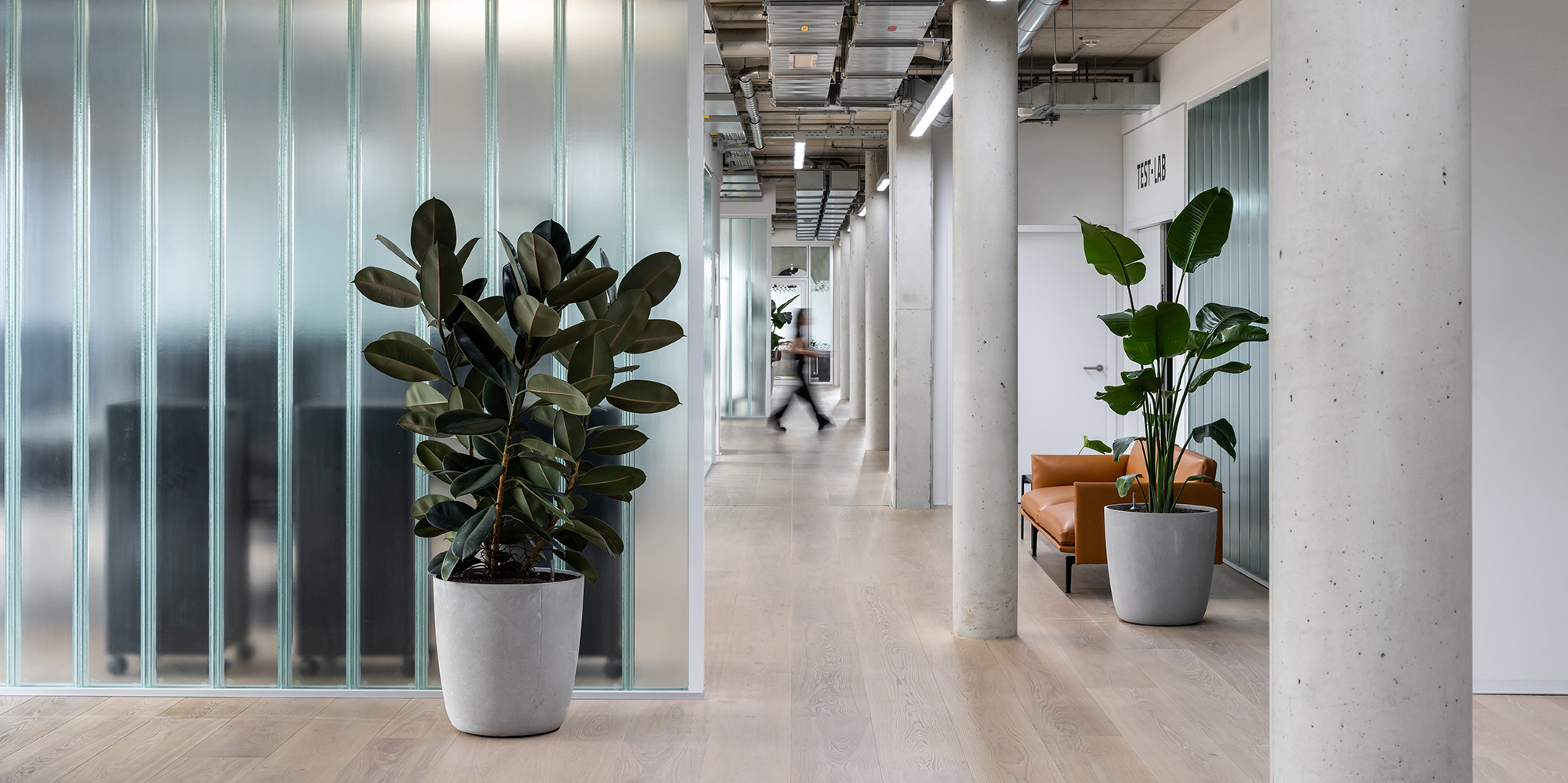
In response to request for open-plan solutions, the architects tried to expand the notion of “hybrid” into spatial design and working environments.
